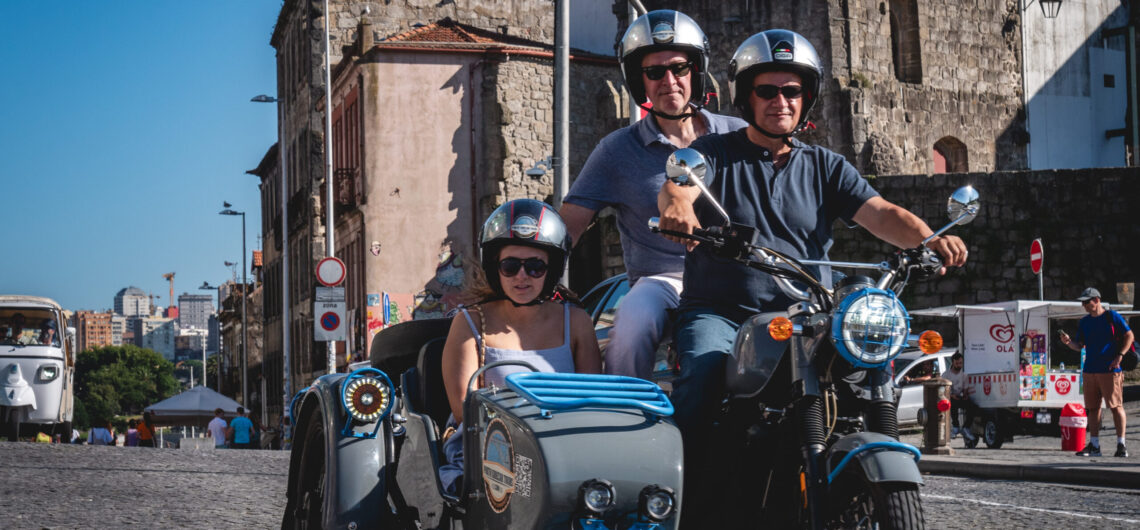Embarking on a Portugal photo tour is more than a journey through scenic landscapes and vibrant streets; it’s an opportunity to tell a story through your photographs. While technical skills like composition and lighting are essential, the true power of photography lies in its ability to convey emotion, context, and narrative.
In this post, we explore how to structure your Portugal photo tour as a visual story, transforming a series of images into a meaningful photo essay. From capturing wide establishing shots to intimate portraits and thoughtful closing frames, you’ll learn how to shoot with intention and create images that engage and inspire.
Starting with establishing shots
Every good story begins by setting the scene, and in photography, establishing shots provide that essential context.
During your Portugal photo tour, seek wide-angle views that introduce your location — whether it’s the iconic Dom Luís I Bridge in Porto, the pastel buildings of Lisbon’s Alfama district, or the rolling vineyards of the Douro Valley.
These images give viewers a sense of place and atmosphere, grounding your narrative. Look for light and weather conditions that enhance the mood — morning mist, golden hour warmth, or even dramatic clouds.
Weaving cultural context
A photo story gains depth when it incorporates cultural elements that speak to the heart of your subject. Portugal’s rich traditions and daily life offer countless opportunities. Document street markets, traditional festivals, artisans at work, or the delicate details of azulejo tiles.
Rather than simply snapping random scenes, observe and select moments that reflect authentic experiences. The goal is to communicate what makes Portugal unique, using your photos to build cultural layers into your story.
Capturing emotional portraits
People are at the core of any compelling narrative. During your Portugal photo tour, focus on capturing the emotions and expressions of locals and fellow travelers. Portraits — whether candid or posed — can reveal the joys, struggles, and everyday beauty of life in Portugal.
Approach your subjects respectfully and patiently. Use natural light to highlight faces and expressions, and aim to include elements of their environment that add meaning — perhaps a fisherman at work, a child playing, or an elderly artisan crafting pottery.
Finding storytelling details
Sometimes, the smallest details tell the richest stories. On your tour, train your eye to notice textures, colors, and objects that contribute to the narrative. A weathered door, a cup of traditional coffee, or a pair of worn shoes can symbolize the passage of time and human presence.
These details serve as visual “footnotes” in your photo essay, adding nuance and depth that connect the broader scenes with intimate moments.
Using closing frames to conclude your story
Just as a good story needs a satisfying ending, your photo essay benefits from images that provide closure. Closing frames can be quiet, contemplative shots—perhaps a sunrise or sunset over the Atlantic, an empty street bathed in soft light, or a fading festival scene.
These final images leave viewers with a lasting impression and a sense of completion, inviting reflection on the journey you have shared.
Transform your Portugal photo tour into a narrative experience with personalized guidance. Join Pictury Photo Tours for expert storytelling techniques and unforgettable photography adventures.
Shooting with intention
To create a cohesive visual story, it’s vital to shoot deliberately. Before snapping, consider how each photo contributes to your overall narrative. Ask yourself:
- Does this image establish setting, context, emotion, or detail?
- How does it relate to the photos before and after?
- Does it evoke a mood or message that fits my story?
This mindfulness turns a collection of images into a meaningful, structured journey.
Balancing technical and narrative elements
While storytelling is central, don’t neglect your technical foundation. Balanced exposure, sharp focus, and thoughtful composition remain critical. Use depth of field to isolate subjects or connect scenes; adjust lighting to convey mood; and experiment with perspectives to keep your story visually engaging.
Editing to enhance your photo essay
Post-processing is your final tool to unify your narrative. Maintain consistency in color tones and contrast to create a harmonious series. Select photos that build a flow — beginning, middle, and end — and consider sequencing that guides viewers naturally.
Avoid over-editing; authenticity is key to preserving the emotional impact of your Portugal photo tour.
Ready to tell your story through a Portugal photo tour?
Join Pictury Photo Tours for an immersive, narrative-driven photography experience guided by local experts. Create images that do more than capture moments — they tell timeless stories.



